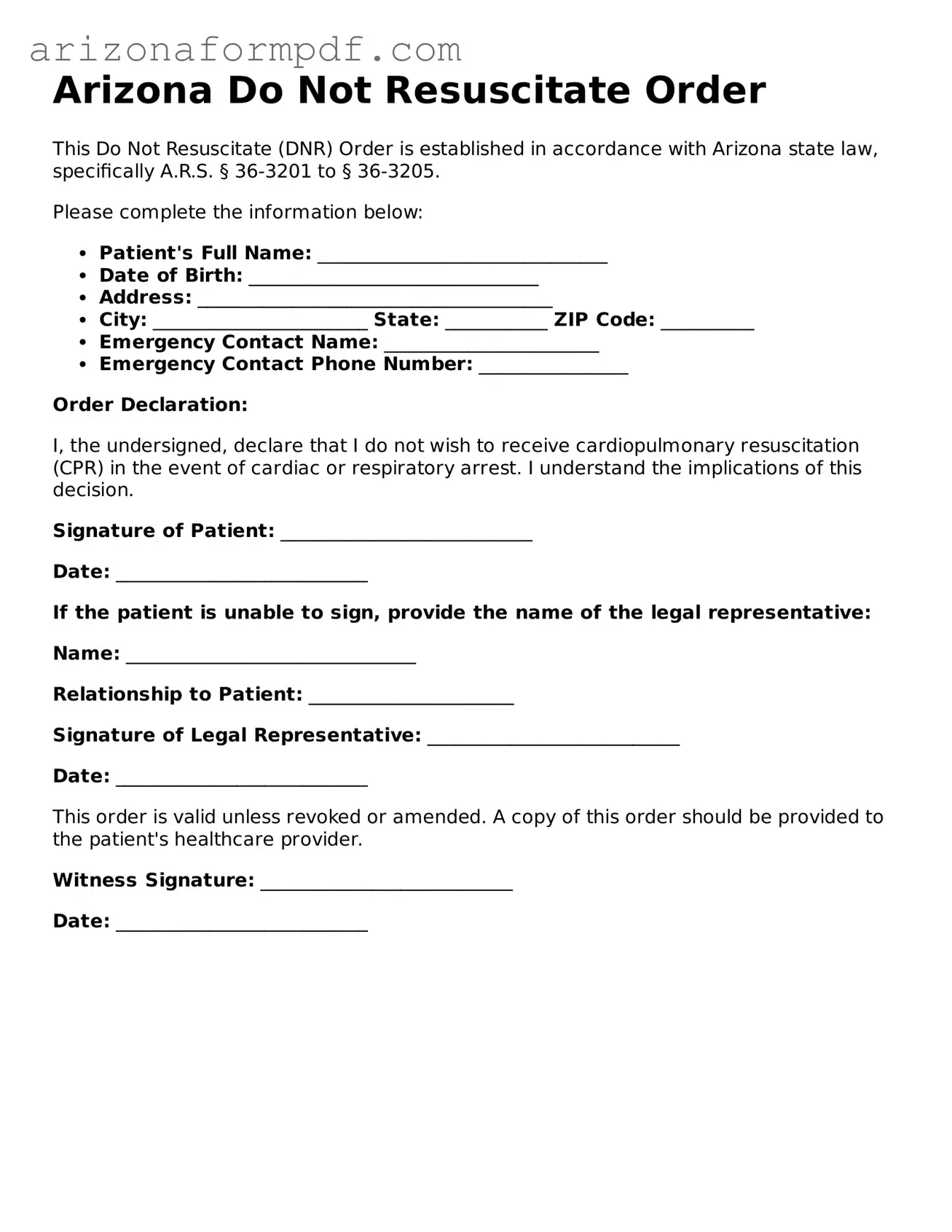What is a Do Not Resuscitate (DNR) Order in Arizona?
A Do Not Resuscitate Order is a legal document that allows a person to express their wishes regarding resuscitation efforts in the event of a medical emergency. In Arizona, this order indicates that if a person's heart stops beating or they stop breathing, medical personnel should not perform cardiopulmonary resuscitation (CPR) or other life-saving measures. It is an important tool for individuals who wish to avoid aggressive medical interventions at the end of life.
Who can request a DNR Order in Arizona?
In Arizona, a DNR Order can be requested by individuals who are at least 18 years old and have the capacity to make their own medical decisions. Additionally, a legal guardian or an agent designated under a healthcare power of attorney may also request a DNR Order on behalf of someone who is unable to do so.
How do I obtain a DNR Order in Arizona?
To obtain a DNR Order, you must complete the official Arizona DNR form. This form can typically be acquired from healthcare providers, hospitals, or online through state health department resources. Once completed, the form must be signed by the individual and a physician to be valid. It is important to discuss your wishes with your doctor before filling out the form.
Where should I keep my DNR Order?
Once you have completed and signed your DNR Order, it is crucial to keep it in a place where it can be easily accessed by medical personnel. Many people choose to keep a copy in their medical records, with their family members, or in a visible location at home. Some individuals also carry a wallet card that indicates they have a DNR Order.
Can I change or revoke my DNR Order?
Yes, you can change or revoke your DNR Order at any time. If you decide to do so, it is important to notify your healthcare provider and ensure that any new documents are properly completed and signed. Make sure to distribute the updated order to anyone who may need to know about your wishes, including family members and medical personnel.
Does a DNR Order apply outside of a hospital setting?
Yes, a DNR Order is valid in both hospital and out-of-hospital settings in Arizona. However, it is important to ensure that the order is clearly documented and accessible to emergency medical personnel. In some cases, additional documentation may be required for out-of-hospital situations.
What happens if I do not have a DNR Order?
If you do not have a DNR Order in place and experience a medical emergency, healthcare providers are required to perform life-saving measures such as CPR. This is done regardless of your wishes unless there is a clear indication that you do not want such interventions.
Will having a DNR Order affect my medical care?
Having a DNR Order does not mean that you will receive any less medical care. It simply specifies your wishes regarding resuscitation efforts. Healthcare providers will continue to offer appropriate treatments and interventions that align with your overall healthcare goals and preferences.
Is a DNR Order the same as a living will?
No, a DNR Order and a living will are not the same, although they are related. A DNR Order specifically addresses resuscitation efforts in emergencies, while a living will outlines your preferences for medical treatment and end-of-life care more broadly. Both documents can work together to ensure that your healthcare wishes are honored.
Do I need a lawyer to create a DNR Order?
No, you do not need a lawyer to create a DNR Order in Arizona. The process is designed to be straightforward, allowing individuals to express their wishes regarding resuscitation without needing legal assistance. However, consulting with a healthcare professional or a legal expert can provide additional guidance and ensure that your documents are completed correctly.
